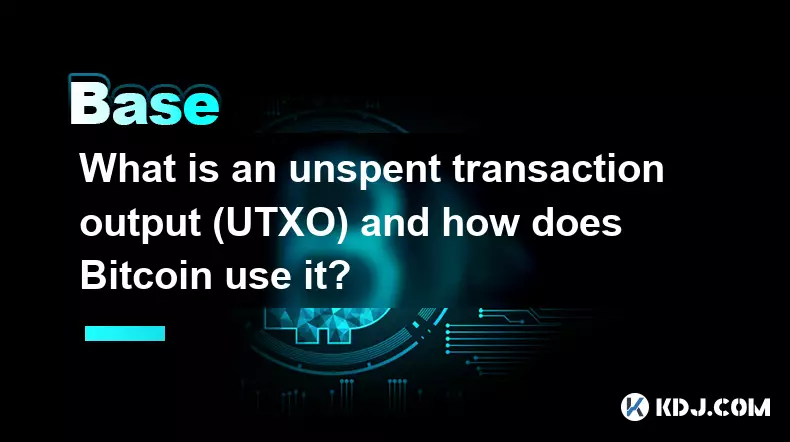-
 bitcoin
bitcoin $103128.103252 USD
-3.33% -
 ethereum
ethereum $3437.127692 USD
-4.86% -
 tether
tether $0.999700 USD
-0.02% -
 xrp
xrp $2.403993 USD
-5.73% -
 bnb
bnb $961.374676 USD
-4.11% -
 solana
solana $154.938665 USD
-8.18% -
 usd-coin
usd-coin $1.000113 USD
0.03% -
 tron
tron $0.298122 USD
0.30% -
 dogecoin
dogecoin $0.172428 USD
-5.76% -
 cardano
cardano $0.557625 USD
-7.13% -
 hyperliquid
hyperliquid $38.740701 USD
-6.51% -
 chainlink
chainlink $15.306051 USD
-7.51% -
 bitcoin-cash
bitcoin-cash $507.558648 USD
-3.26% -
 stellar
stellar $0.281899 USD
-6.74% -
 unus-sed-leo
unus-sed-leo $9.241811 USD
0.57%
What is a Layer 2 scaling solution and how does it make blockchains faster?
Layer 2 solutions boost blockchain speed and cut fees by processing transactions off-chain while inheriting the security of the main network.
Nov 12, 2025 at 08:00 am

Understanding Layer 2 Scaling Solutions
1. A Layer 2 scaling solution refers to a secondary framework or protocol built on top of an existing blockchain, often called Layer 1. These solutions aim to handle transactions more efficiently without altering the base layer’s structure. By processing transactions off the main chain, Layer 2 reduces congestion and increases throughput.
2. The primary goal of Layer 2 is to maintain the security guarantees of the underlying blockchain while drastically improving transaction speed and reducing fees. This is particularly crucial for networks like Ethereum, where high demand often leads to slow confirmations and expensive gas costs.
3. Instead of recording every single transaction directly on the blockchain, Layer 2 protocols batch multiple operations together and settle the final state back on Layer 1. This minimizes the data load on the main network, enabling thousands of transactions per second compared to the limited capacity of the base chain.
4. Layer 2 achieves scalability by shifting computation and settlement off-chain, only relying on the main blockchain for dispute resolution and final verification. This separation allows developers to design systems optimized for performance while still inheriting the decentralization and immutability of the original network.
Common Types of Layer 2 Technologies
1. Rollups are among the most widely adopted Layer 2 solutions. They come in two main forms: optimistic and zero-knowledge rollups. Optimistic rollups assume transactions are valid by default and use fraud proofs to challenge incorrect claims, while zero-knowledge rollups use cryptographic proofs to instantly verify batches of transactions.
2. State channels allow participants to conduct numerous transactions off-chain and only interact with the main blockchain when opening or closing the channel. Bitcoin’s Lightning Network and Ethereum’s Raiden (now inactive) are examples that rely on this model.
3. Sidechains operate as independent blockchains connected to the main chain via a two-way bridge. While they offer flexibility and high throughput, they typically don’t inherit the same level of security as the parent chain unless specifically designed to do so.
4. Validium and plasma chains also fall under Layer 2 architectures. Validium stores transaction data off-chain but uses validity proofs similar to zk-rollups, whereas plasma chains organize transactions into hierarchical trees, periodically submitting summaries to Layer 1.
How Layer 2 Enhances Blockchain Performance
1. Transaction throughput improves significantly because Layer 2 networks process operations independently from the main chain. For example, some rollup implementations have demonstrated the ability to handle over 2,000 transactions per second, far exceeding Ethereum’s base capacity of around 15 TPS.
2. Gas fees drop substantially since users no longer compete for space on the congested mainnet. Most costs shift to the Layer 2 operator or sequencer, who aggregates transactions at a fraction of the price required for direct on-chain execution.
3. By compressing large volumes of transaction data into compact proofs or summaries, Layer 2 reduces the burden on validators and nodes, making the entire ecosystem more sustainable and accessible. This efficiency enables microtransactions and new applications that were previously impractical due to cost or latency.
4. User experience benefits from faster confirmation times. Many Layer 2 solutions provide near-instant feedback for payments or smart contract interactions, which is essential for real-time applications such as gaming, decentralized exchanges, and social platforms.
Security Considerations in Layer 2 Systems
1. Not all Layer 2 solutions offer identical security levels. Zero-knowledge rollups are considered highly secure because they cryptographically prove every batch before submission, ensuring correctness without requiring trust.
2. Optimistic rollups depend on economic incentives and time-delayed challenges to detect fraud. During the challenge window, malicious actors could attempt to withdraw funds based on false states, though bonded validators usually deter such behavior.
3. Centralization risks exist in certain designs, especially when a single entity controls the sequencing of transactions. If the sequencer goes offline or acts maliciously, users may face delays or censorship until alternative mechanisms kick in.
4. Bridges connecting Layer 2 to Layer 1 can become attack vectors. Several high-profile exploits have targeted cross-chain messaging systems, emphasizing the need for rigorous auditing and modular security practices.
Frequently Asked Questions
What is the difference between Layer 1 and Layer 2 scaling?Layer 1 scaling involves modifying the core blockchain protocol itself—such as increasing block size or implementing sharding—to improve performance. Layer 2 scaling builds additional layers on top of the existing blockchain to handle transactions externally, preserving the original chain’s rules while enhancing speed and efficiency.
Are Layer 2 transactions reversible?No, once a Layer 2 transaction is finalized and settled on the main blockchain, it becomes irreversible just like any other on-chain transaction. However, during the challenge period in optimistic systems, disputes can alter the outcome before finality is achieved.
Can I use DeFi apps on Layer 2 networks?Yes, many decentralized finance platforms have deployed versions on Layer 2 solutions such as Arbitrum, Optimism, and zkSync. Users interact with these apps similarly to how they would on Ethereum, but enjoy lower fees and faster execution.
Do I need a special wallet for Layer 2?Most standard crypto wallets like MetaMask support Layer 2 networks through custom network configuration. Some projects also offer native wallets optimized for their specific Layer 2 environment, but general compatibility with existing tools remains strong.
Disclaimer:info@kdj.com
The information provided is not trading advice. kdj.com does not assume any responsibility for any investments made based on the information provided in this article. Cryptocurrencies are highly volatile and it is highly recommended that you invest with caution after thorough research!
If you believe that the content used on this website infringes your copyright, please contact us immediately (info@kdj.com) and we will delete it promptly.
- Crypto Regulation Arrives in Brazil: Central Bank's New Rules and the Future of Digital Assets
- 2025-11-12 23:00:02
- Franklin Templeton, Benji Tech, and Canton Network: Bridging TradFi and DeFi?
- 2025-11-12 23:45:01
- Sui, Balancer, and XRP Security: Navigating the DeFi Minefield
- 2025-11-12 23:30:04
- The US Mint, Pennies, and Cancellation: A New York Minute on a Copper Conundrum
- 2025-11-12 23:30:04
- Penny for Your Thoughts? The US Mint, Canceled Coins, and What It All Means
- 2025-11-12 23:00:02
- Chinese DEX Sun Wukong: Surging Volumes and Stablecoin Reserves
- 2025-11-12 20:50:00
Related knowledge

What is the difference between a transparent and a shielded transaction?
Nov 10,2025 at 05:59pm
Understanding Transparent Transactions in Cryptocurrency1. Transparent transactions are the standard form of transaction on most public blockchains li...

What is a "crypto airdrop farmer" and what strategies do they use?
Nov 09,2025 at 03:39pm
What Is a Crypto Airdrop Farmer?1. A crypto airdrop farmer is an individual who actively participates in blockchain projects to qualify for free token...

What is an unspent transaction output (UTXO) and how does Bitcoin use it?
Nov 12,2025 at 01:40am
Understanding the Concept of Unspent Transaction Output (UTXO)1. An Unspent Transaction Output, commonly referred to as UTXO, is a fundamental compone...

How do you track a crypto portfolio across multiple wallets and chains?
Nov 12,2025 at 04:19pm
The Evolution of Decentralized Exchanges in the Crypto Ecosystem1. Decentralized exchanges (DEXs) have transformed how users trade digital assets by r...

How does a crypto insurance protocol work?
Nov 08,2025 at 12:39am
Understanding Crypto Insurance Protocols1. A crypto insurance protocol operates by offering financial protection against losses incurred from digital ...

What is token composability and why is it called "DeFi Legos"?
Nov 09,2025 at 06:39am
Bitcoin's Role in Decentralized Finance1. Bitcoin remains the cornerstone of decentralized finance, serving as a benchmark for value and trustlessness...

What is the difference between a transparent and a shielded transaction?
Nov 10,2025 at 05:59pm
Understanding Transparent Transactions in Cryptocurrency1. Transparent transactions are the standard form of transaction on most public blockchains li...

What is a "crypto airdrop farmer" and what strategies do they use?
Nov 09,2025 at 03:39pm
What Is a Crypto Airdrop Farmer?1. A crypto airdrop farmer is an individual who actively participates in blockchain projects to qualify for free token...

What is an unspent transaction output (UTXO) and how does Bitcoin use it?
Nov 12,2025 at 01:40am
Understanding the Concept of Unspent Transaction Output (UTXO)1. An Unspent Transaction Output, commonly referred to as UTXO, is a fundamental compone...

How do you track a crypto portfolio across multiple wallets and chains?
Nov 12,2025 at 04:19pm
The Evolution of Decentralized Exchanges in the Crypto Ecosystem1. Decentralized exchanges (DEXs) have transformed how users trade digital assets by r...

How does a crypto insurance protocol work?
Nov 08,2025 at 12:39am
Understanding Crypto Insurance Protocols1. A crypto insurance protocol operates by offering financial protection against losses incurred from digital ...

What is token composability and why is it called "DeFi Legos"?
Nov 09,2025 at 06:39am
Bitcoin's Role in Decentralized Finance1. Bitcoin remains the cornerstone of decentralized finance, serving as a benchmark for value and trustlessness...
See all articles










































































